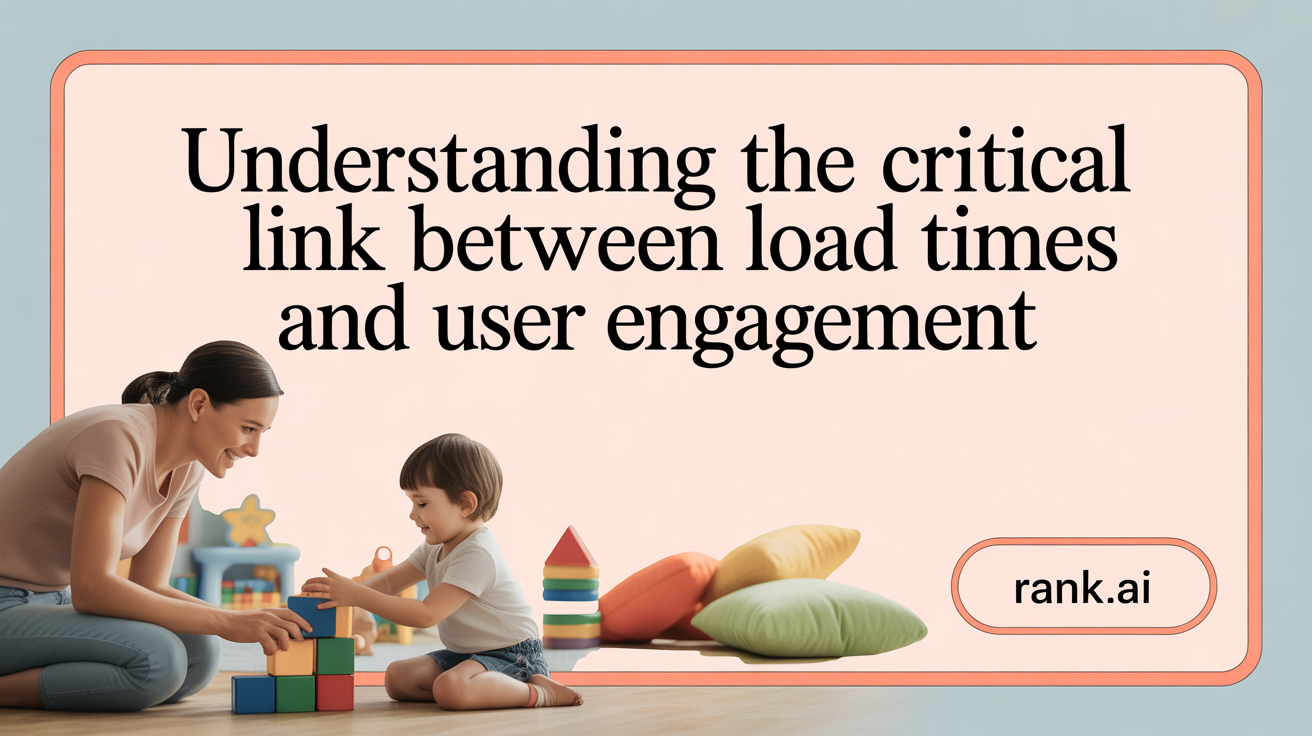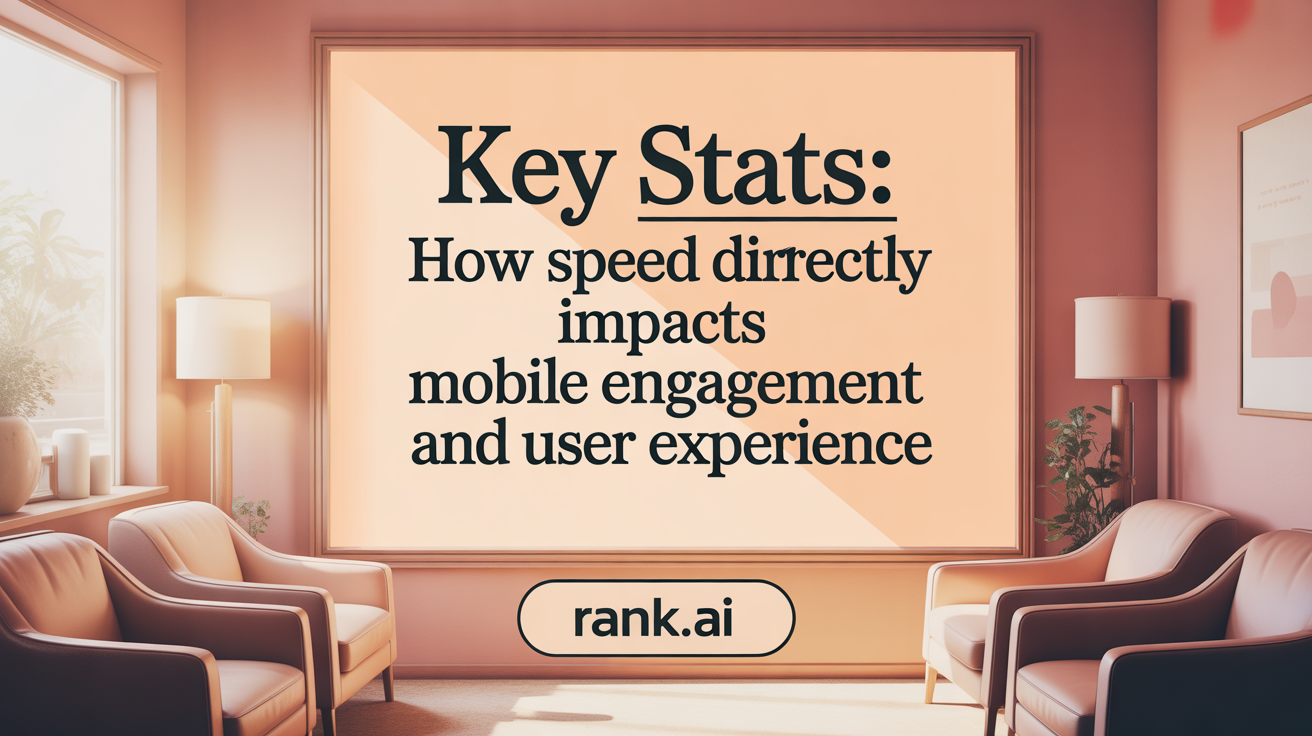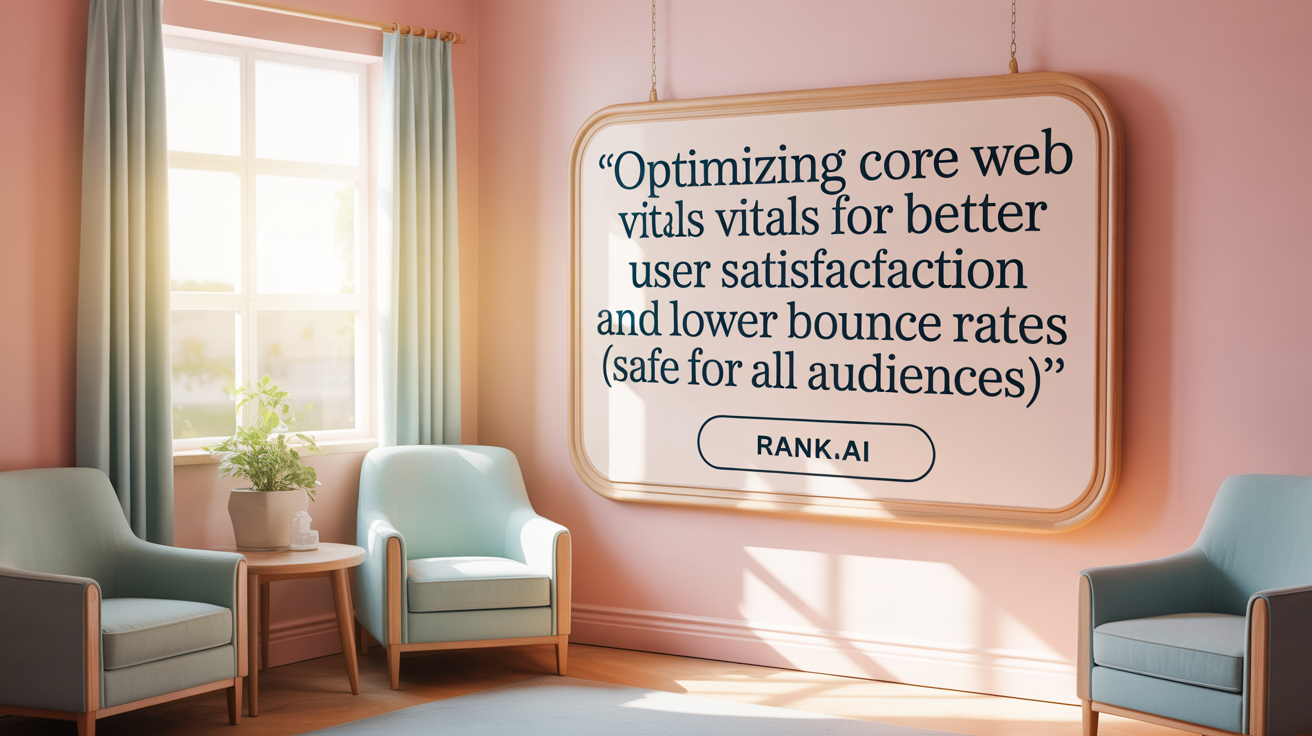Bounce Rate Statistics in Relation to Mobile Load Times
How Mobile Load Times Shape Bounce Rate Trends and User Engagement

Understanding the Crucial Link Between Mobile Speed and User Behavior
In today's digital ecosystem, mobile device users constitute a major portion of web traffic. The speed at which a website loads on mobile can make or break user engagement, directly influencing bounce rates and conversions. This article explores comprehensive statistics and insights on the relationship between mobile page load times and bounce rates, unraveling how load delays affect user retention, engagement, and overall site performance. We also examine Google's recommended standards, industry benchmarks, and effective optimization strategies to enhance mobile user experience.
Defining Mobile Bounce Rate and Its Importance
What is mobile bounce rate?
Mobile bounce rate refers to the percentage of visitors on a mobile device who leave a website after viewing only one page. It measures how effectively a mobile site captures and retains visitor interest.
How is bounce rate calculated on mobile?
To determine the mobile bounce rate, divide the number of visitors who leave after viewing a single page by the total number of mobile visitors, then multiply by 100 to get a percentage. For example, if 1,000 users visit a mobile site and 560 leave after just one page, the bounce rate is 56%.
Factors influencing mobile bounce rate
Several factors affect how long users stay on mobile websites. These include load times, how well the site adapts to mobile screens, ease of navigation, and whether the content matches user expectations.
Why does bounce rate matter in ecommerce?
A high mobile bounce rate often signals issues like slow page load speeds or poor usability, which can lead to lost sales. Conversely, a lower bounce rate suggests visitors find the site engaging and are more likely to convert into customers.
Aspect Impact Additional Details Load Speed Faster sites lower bounce rates A delay of 2 seconds can increase bounce rate by over 100% Mobile Optimization Improves user experience Well-optimized sites lead to a 35% higher session duration Content Relevance Keeps visitors engaged Relevant content reduces the chance of quick exits Navigation Ease Enhances usability Clear menus and easy navigation reduce user frustration
Understanding and improving mobile bounce rate is crucial for ecommerce success, as it directly influences user engagement and sales performance.
The Impact of Mobile Page Load Time on Bounce Rates

How does mobile page load time influence bounce rates?
Mobile page load time is a major factor affecting how users interact with a website. Research shows that as load times increase beyond three seconds, user abandonment rises sharply. Specifically, about 53% of mobile visitors tend to leave if a page takes more than three seconds to load.
The relationship between load speed and bounce rate is quite strong. For example, sites that load faster—within one second—tend to have lower bounce rates, around 7%. In contrast, when load times extend to five seconds or more, bounce rates can spike to 38% or higher.
This trend is particularly evident on mobile devices. Most users expect quick responses; when a page exceeds six to ten seconds, the likelihood of abandonment increases dramatically. In fact, if a website takes around 10 seconds to load, nearly 123% of visitors may leave, costing businesses significant traffic and sales.
What happens when pages take longer than 3 seconds to load?
When load times surpass three seconds, user patience diminishes, leading to increased bounce rates and reduced engagement. For mobile users, this threshold is critical, as over half will abandon a site that is slow to respond. Beyond this point, the chance of losing potential customers grows exponentially.
Impact on conversions can be substantial. Data suggests that every second of delay can decrease conversion rates by around 12%, directly impacting revenue. Fast-loading sites not only retain visitors longer but also encourage actions like purchases or inquiries.
How can load times be improved?
Implementing technical optimizations can drastically reduce load times. Techniques include caching content, compressing images, minifying code, and using Content Delivery Networks (CDNs). Ensuring website elements are optimized for mobile, especially under Core Web Vitals metrics, can further improve speed.
In today's digital environment, meeting user expectations for speed is essential. Optimizing your mobile page load time—aiming for under three seconds—can significantly lower bounce rates and boost overall site performance.
How Load Times Affect User Engagement and Retention
How does page load time affect user engagement and retention on mobile websites?
Page load time plays a crucial role in keeping users engaged and encouraging them to stay longer on mobile websites. When a site loads quickly—ideally under two seconds—users are more likely to browse multiple pages, with studies showing an increase of about 5.6 additional pages per session compared to slower sites. This means visitors are not only spending more time on the site but are also more likely to convert.
Conversely, slower load times can significantly increase bounce rates. For example, when page loading extends from two to five seconds, bounce rates can skyrocket from around 9% to 38%. Mobile users tend to be particularly impatient, with a sharp rise in abandonment rates after delays of just 1 to 3 seconds. A delay in this range can cause abandonment to increase by approximately 32%, highlighting the importance of fast-loading pages for retaining mobile visitors.
Several companies have demonstrated how improving load speeds boosts engagement. Renault, for instance, reduced its bounce rate by 14% and improved conversions by 13% after optimizing its site to load in less than a second. Similarly, NDTV experienced a 50% reduction in bounce rates following a 55% increase in website speed.
To maximize user retention on mobile, organizations should focus on optimizing site speed through methods like compressing images, leveraging caching, and using content delivery networks (CDNs). Tools such as Google PageSpeed Insights (PSI) can guide these enhancements. Ultimately, quicker load times contribute to better user experiences, improved search rankings, and increased revenue.
Benchmark Statistics Linking Mobile Load Times and Bounce Rates

Understanding the relationship between page load times and bounce rates is crucial for optimizing website performance, especially on mobile devices. Benchmark statistics reveal that a bounce rate of 40% or lower is generally seen as good, indicating visitors are engaging with the site. Conversely, bounce rates exceeding 55% are considered high, often meaning users are leaving quickly due to slow loading or irrelevant content.
On average, mobile page load times significantly impact user retention. Data shows that 40% to 53% of users leave a website if it takes longer than three seconds to load on their mobile device. This rapid abandonment highlights the importance of optimizing site speed to prevent high bounce rates.
The increase in bounce rates correlates closely with slower load times. For example, as page load time increases from 1 to 3 seconds, bounce rates can climb by approximately 32% on mobile. When load times extend to over 5 seconds, the bounce rate can spike dramatically, reaching up to 38% or more.
Core Web Vitals—Google’s metrics for assessing website usability—also have a notable impact. Sites that meet Web Vitals thresholds, particularly optimized Largest Contentful Paint (LCP), tend to see 24% fewer visitors abandoning the site during loading. Conversely, sites with poor Core Web Vitals performance experience higher bounce rates and lower engagement.
Overall, statistics reinforce that fast-loading mobile pages are vital for retaining visitors and reducing bounce rates. Improving website speed through techniques like image optimization and prefetching content directly contributes to better user experience and higher conversion rates.
| Metric | Bounce Rate | Load Time Impact | Additional Notes ||---------|--------------|------------------|------------------|| Ideal | <40% | <3 seconds | Good user engagement || Acceptable | 40-55% | 3-4 seconds | Slightly higher bounce risk || High | >55% | >4 seconds | Significant abandonment || Core Web Vitals | Performance score above threshold | Faster load times improve engagement |
Google's Recommended Mobile Page Load Time Standards
Google emphasizes the importance of fast-loading websites for both user experience and search engine optimization (SEO). The company's guidelines recommend that websites aim to load in under three seconds to keep visitors engaged and satisfy search ranking factors.
Specifically for mobile devices, Google suggests a much more aggressive target: a load time of less than half a second. This is crucial because mobile users tend to be less patient, with many abandoning pages if they do not load quickly.
A key performance metric used by Google is the Largest Contentful Paint (LCP). The goal is to have the LCP under 2.5 seconds. Achieving this standard indicates that the main content of a webpage has rendered promptly, fostering user trust and encouraging longer visits.
Meeting these speed benchmarks offers significant SEO benefits. Faster sites tend to rank higher in Google search results because page speed is a ranking signal. Additionally, quick-loading pages reduce bounce rates, meaning visitors are more likely to stay and engage.
Research shows that exceeding the three-second load time threshold dramatically increases bounce rates. On mobile, if a page takes longer than this, over half of users will leave before it fully loads. This behavior highlights the importance of optimizing site performance through techniques like compressing images, leveraging content delivery networks, and cleaning up code.
Ultimately, adhering to Google's page speed recommendations not only improves visibility in search results but also enhances overall user satisfaction, leading to higher conversions and loyalty. For webmasters aiming to stay competitive, focusing on speed is a critical aspect of site development.
Industry Case Studies Demonstrating Load Time Optimization Benefits

Examples of Companies Reducing Bounce Rates by Speeding Up Pages
Several leading companies have seen remarkable improvements in user engagement by optimizing their website load times. Renault, for instance, managed to cut its bounce rate by 14% after reducing the load time of its largest page elements to under 1 second. Similarly, NDTV experienced a 50% decrease in bounce rates following a 55% boost in website speed. These results highlight the strong link between faster load times and reduced user abandonment.
Quantified Improvements in Conversion and Bounce Statistics
Faster websites translate directly into higher conversions. Walmart, a prominent example, found that each additional second of page load time resulted in a 2% drop in conversions. On the flip side, improving load times significantly boosts user actions; for example, optimizing above-the-fold content on e-commerce sites increased 'Add to Cart' actions by 0.5%. Studies also show that sites with load times of just 1 second have conversion rates over 3%, whereas delays beyond 4 seconds can cause conversions to fall below 1%.
Specific Optimization Techniques Employed
Companies employ various strategies to improve website speed. Renault focused on reducing the load time of key page elements to under 1 second. AD sites like Google recommend cleaning up images by decreasing their size, minimizing JavaScript and CSS files, and leveraging prefetching techniques, such as those used by Facebook, which enhances load times by up to 25%. Implementation of Accelerated Mobile Pages (AMP) has also proven highly effective, with AMP pages loading approximately four times faster than regular pages.
Revenue Impact of Faster Load Times
The financial benefits of optimizing website speed are clear. An e-commerce site generating $10 million annually could see up to a $200,000 increase in revenue after just a 2% boost in conversion rate resulting from faster load times. Additionally, companies like Walmart reported that every second saved in page load time can increase revenue by approximately 2%. These improvements not only enhance user experience but also contribute significantly to overall business growth.
Advanced Mobile Performance Metrics Influencing Bounce Rates

Role of Core Web Vitals such as LCP and First Input Delay (FID)
Core Web Vitals, including Largest Contentful Paint (LCP) and First Input Delay (FID), are crucial indicators of mobile site performance. LCP measures how quickly the main content appears on the screen, with an ideal goal of under 2.5 seconds. FID assesses responsiveness, aiming for delays below 100 milliseconds. Improving these metrics can significantly enhance the user experience, making websites feel faster and more responsive.
Relationship between these metrics and user satisfaction
Fast-loading and responsive sites correlate strongly with higher user satisfaction. For example, if a page’s LCP exceeds 3 seconds, bounce rates can increase by over 32%. Similarly, even small delays in FID can lead to frustration and abandonment. Users tend to leave a site if it does not load quickly, often within 3 seconds.
Current statistics on adoption of Core Web Vitals optimizations
Despite their importance, only around 34% of top websites pass their Core Web Vitals on desktops, and about 32% on mobile. Many mobile sites still fall short, with 70% of mobile pages not optimized for these critical metrics. Improving Core Web Vitals can reduce bounce rates and boost conversions, with some companies experiencing up to a 50% decrease in bounce rates after optimization.
Effect of 5G and AMP technologies on load times
Emerging technology like 5G has cut mobile load times by up to 50%, aiming to bring median speeds below 3 seconds by 2025. Accelerated Mobile Pages (AMP) also play a role, with AMP pages loading four times faster than non-AMP counterparts. These advancements are setting new benchmarks, helping sites meet user expectations for quick access and reducing abandonment rates significantly.
Key Metrics Current State Impact on User Behavior Technological Advances LCP 2.5 seconds (ideal) Higher satisfaction with faster load times 5G reduces average load time by up to 50% FID 78.5 ms (mobile), 15.2 ms (desktop) Responsiveness improves engagement AMP pages load 4x faster Adoption 34% pass Core Web Vitals Higher pass rates reduce bounce and increase conversions Accelerated mobile networks speed up load times
Optimizing these performance indicators is essential in today's mobile-centric world, directly influencing bounce rates and user satisfaction.
Future Trends: Evolving Expectations and Technologies to Reduce Mobile Bounce Rates

Expected improvements in mobile speed by 2025
Mobile page load times are expected to improve significantly by 2025. Currently, the global mobile load time averages around 8.6 seconds, but efforts are underway to cut this down to under 3 seconds, and even close to 2 seconds as user expectations rise. Faster load times on mobile are crucial, given that 53% of visitors abandon pages if it takes more than three seconds to load.
Impact of 5G rollout on median load times
The widespread rollout of 5G technology is set to revolutionize mobile browsing speeds. Studies predict that 5G can reduce mobile load times by up to 50%. This means median mobile load speeds could shift well below the current average, pushing closer to 3 seconds or less. Such improvements will likely reduce bounce rates and improve user engagement.
Rising user expectations for faster sites
As mobile speeds improve, user expectations are also rising. By 2025, most mobile users expect sites to load in under 2 seconds. If they experience delays beyond this, the chances of bouncing increase sharply — up to 123% when loading exceeds 10 seconds. Meeting these expectations is vital for businesses aiming to retain visitors and convert them into customers.
Technologies like AMP and prefetching enhancing performance
Innovative technologies such as Accelerated Mobile Pages (AMP) and content prefetching are proving instrumental in reducing load times. AMP pages load about four times faster than regular pages, and prefetching content, similar to Facebook's method, can improve load speeds by up to 25%. These tools help create smoother, faster user experiences and are expected to become standard practices.
Technology Current Impact Future Potential Additional Info AMP (Accelerated Mobile Pages) 4x faster load times on mobile Further integration and optimization for faster experiences Widely adopted by major publishers and retailers Prefetching Content Improves load times by 25% Enhanced algorithms to predict user actions Improves perceived performance and engagement 5G Connectivity Up to 50% faster speeds More widespread adoption, pushing median speeds below 3s Expected to transform mobile user experience
Ensuring fast, efficient websites on mobile is essential as expectations grow and new technologies emerge. By leveraging advances like 5G, AMP, and prefetching, businesses can significantly reduce bounce rates and boost conversions in the coming years.
Driving Optimal Mobile Experiences by Prioritizing Speed
The compelling statistics and research findings confirm a strong and direct correlation between mobile page load times and bounce rates. As mobile traffic continues to rise, optimizing page speed is not merely a technical necessity but a competitive business imperative. Meeting Google's recommended thresholds and striving for sub-three-second load times can significantly enhance user engagement, reduce abandonment, and increase conversions. Advances in network technology like 5G, combined with diligent implementation of Core Web Vitals improvements and innovative tools such as AMP, offer promising pathways to meet evolving user expectations. Ultimately, businesses that prioritize mobile performance will foster greater loyalty, improve SEO rankings, and maximize revenue opportunities in an increasingly mobile-first world.
References
- Page load time statistics - Think with Google
- Analyzing Website Load Time Statistics and Their Effects - Huckabuy
- Website Load Time & Speed Statistics: Is Your Site Fast Enough?
- 13 Website Page Load Time Statistics (2025 Data) - Blogging Wizard
- BEST MOBILE SITE LOAD SPEED STATISTICS 2025 - Amra & Elma
- 20+ Interesting Website Speed Statistics (2025) - Site Builder Report
- Longer Mobile Page Load Times Drastically Increase Bounces
- 49+ Website Load Time Statistics & How to Improve (2025)
- Website Load Time Statistics (2025): Average Page Load Time ...
- How page speed impacts your bounce rate, with example of Zalando
Table of contents
Recent articles
Fresh insights on AI and SEO to help you stay ahead of the curve.


Ready to Improve
Your Rankings?
Use our free tools to get instant insights into your SEO performance and discover opportunities to rank higher




